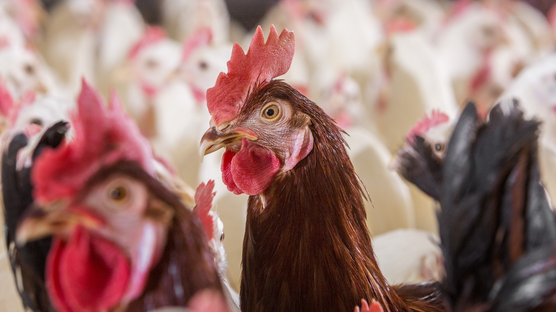
Published on May 25, 2021
How to control Poultry (Red) Mite infestations, an Integrated Pest Management strategy explained
Treatment of Poultry Red Mite is very challenging for farmers as only a few products are licensed for use during egg production and in general the first stages of poultry red mite infestation are difficult to detect and to treat. A sustainable Integrated Pest Management strategy is needed to decrease chemical treatment, ban illegal treatment (avoiding future fipronil-like crises), increase animal health and welfare, improve the economic benefits for egg producers and to meet consumers’ demand for healthy and nutritious eggs.
Integrated Pest Management (IPM) is a way of controlling pest species in agriculture to reduce economic losses, and this in a sustainable way. It is a holistic approach where different steps are combined to prevent and control pest infestation and to reduce the use of chemical pesticides. These steps include:
- prevention of pest introduction (e.g. by hygiene and biosecurity measures) monitoring of the pest population start treatment after a certain threshold of the pest population (based on the monitoring)
- focusing on non-chemical treatments (e.g. plant-derived products or natural enemies)
- only using chemical treatments as a last resort, when the non-chemical treatments appear to be insufficient to control the pest avoiding resistance emergence against certain treatments a good evaluation of the IPM strategy.
IPM approaches
Monitoring
To understand the situation inside the chicken barn, it is important to investigate the presence of poultry red mite. Two easy monitoring tools can be used to monitor the poultry red mite populations.
- Ricksticks (PVC tube + woodstick ) : a fast method, not very precise (scoring from 1 to 4) that will be used frequently to act quickly if necessary
- Cartons (PVC tube + corrugated cardboard ) : labor intensive and precise method (count of actual number of mites) which will be used less frequently but will give more information on mite infestation

Poultry (red) mite monitoring trap
Empty period
During the empty period, the henhouse should be cleaned thoroughly. This means dry cleaning the facilities at first, followed by a thorough wet cleaning with hot water and soap and finally a disinfection. Studies illustrated that using soap eradicates a lot more mites than using water alone. Be careful that the cleaning products don't interfere with preventive treatments (for example, do not use silica or insecticide if you plan to use predators). For the cleaning of the house, the following steps should be followed :
- Remove manure
- Remove all clustered manure residues (scraping)
- Dry clean house
- Clean with compressor
- Clean heat exchanger
- Dry clean hen house second time
- Clean ventilation duct
- Clean aeration tubes
- Clean manure belts
- Clean central manure belts
- Clean egg belts with high water pressure
- Remove all dirt from the house
- Clean whole house with steam cleaner
- Let everything dry
- Clean manure container/pit
- Disinfect after drying
Pullet delivery
Mites can easily be introduced to the farm through the delivery of pullets. At time of delivery of the pullets, crates need to be checked for presence of mites and the pullet rearer should be contacted to check if he experiences issues with poultry mites.
Management actions during lay
To help prevent the introduction and growth of the mite population, management actions should be carried during the laying period. These measures include:
- Biosecurity : Implement appropriate hygiene measures for staff and external visitors, use disposable or clean egg trays and specific measures for multi-houses farms.
- Flock management actions : remove frequently hard crusts of manure, dust, egg debris on egg belt and manure from manure belt and scapers. Temperature should also be kept below 19°C
- Environment : Have an appropriate pest-control, pets kept away from the vicinity of the henhouses and vegetation cover kept low close to the hen house
Preventive treatments
Several preventive treatment combinations are frequently used, think of additives provided to the water, vaccinations, heat treatment and silica (in wet or dry form). In the MiteControl project, 3 combinations of preventive treatments will be tested :
- Predatory mites + vaccine against poultry red mite
- Predatory mite + water tank additive
- Silica + water tank additive
Further Reading
Copyright picture: Merck Animal Health



